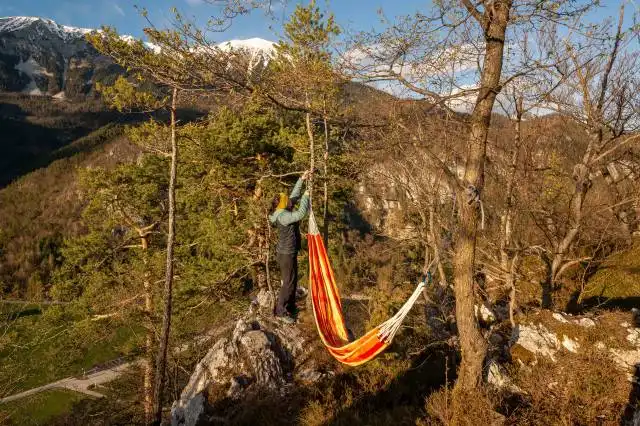Start a Survival School
Transform Novices into Wilderness Heroes with Your Own Survival School
| Updated


SURVIVAL SCHOOL
Unleash your adventurous spirit by venturing into a Survival School business! Imagine teaching novices how to transform into Bear Grylls wannabes, learning the art of surviving in wilderness. A Survival School provides lessons on essential survival skills such as building shelter, finding food and water, and recognizing edible plants. As the owner of a Survival School, your business will not only shape adventure enthusiasts but potentially save lives, making this venture both rewarding and thrilling.
Jump to Business Plan
RELATED BUSINESS IDEAS
Browse ALL Education & Learning Platforms Business Ideas
Discover Your Perfect Domain
Unlock the door to your online success with our hand-picked selection of premium domain names. Whether you're starting a new venture or rebranding an existing one, the right domain can set the tone for your digital presence. Browse through our curated list, each with its unique potential to enhance your brand's visibility and credibility.
SURVIVAL SCHOOL MINI BUSINESS PLAN
This a quick reality check to help you identify the strengths and weaknesses of your business concept before you dive in.
Business Idea: Survival School
Expected Percent Margin:
- Gross Margin: 60-70%
- Net Profit Margin:15-25%
Earnings Expectations:
- Daily Earnings: $300 - $700 (Based on each survival course enrollment)
- Weekly Earnings: $2,100 - $4,900 (Based on running multiple courses weekly)
- Monthly Earnings: $8,400 - $19,600 (Depending on the frequency of courses per month)
- Annual Earnings: $100,000 - $235,000 (Dependent on regular enrollment and course pricing)
Actions to Hit Those Numbers:
Offering Courses:
- Course Management: Create and offer a variety of survival courses (basic, intermediate, and advanced levels).
- Instruction Quality: Hire qualified instructors with relevant survival and teaching experience.
Marketing and Customer Acquisition:
- Digital Marketing: Launch website and use SEO to attract interested people. Run Google and Facebook ad campaigns.
- Local Advertising: Collaborate with local outdoor stores, schools, and community centers to advertise the courses.
- Affiliate Partnerships: Establish partnerships with outdoor outfitters for student gear discounts to help attract new customers.
Customer Experience:
- Safety: Prioritize safety measures and provide comprehensive first aid kits and emergency procedures.
- Location: Choose an outdoor location that's safe, yet challenging and engaging.
Cost Control:
- Instructors Pay: Aim to keep instructor wages at 10-30% of course fees.
- Marketing Cost: Keep marketing costs to less than 15% of expected monthly revenue.
Business Operations:
- Course Schedule: Run 2-3 courses per week with up to 10-20 students per course.
- Expansion: Expand the school to include specialty courses (winter survival, desert survival, etc.) as your reputation grows.
These are generalized estimates and can vary depending on specific local conditions, the specifics of your business model, and the overall economy. Always consult with a financial advisor for personalized advice.
NOT WHAT YOU HAD IN MIND? Here are more ideas



Browse ALL Education & Learning Platforms Business Ideas
Grab Your Business Website Name
Before you get caught up in the whirlwind of setting up your business, invest in a domain name. It's a small but significant step that lays the foundation for your brand and makes it easier for customers to find and trust you. Just like you wouldn't build a house without securing the land first, don't build a business without securing your domain name.
"Why? Can't that wait?" Here's why it shouldn't
Step 1: Determine if the Business is Right Endeavor
Breakdown of Startup Expenses
Before starting a survival school, it is important to first determine if the business is the right endeavor. This includes researching startup expenses and creating a budget. Some of the expenses to consider include the cost of renting a facility, purchasing equipment, and hiring instructors. It is important to research the cost of these items in the local area to get an accurate estimate. Additionally, it is important to consider the cost of any necessary permits or licenses. Once these costs have been determined, it is important to create a budget and determine if the business is feasible.
Breakdown of Ongoing Expenses
In addition to startup expenses, it is important to consider ongoing expenses. This includes the cost of supplies, such as food, water, and first aid kits. It is also important to consider the cost of marketing and advertising, as well as any fees associated with maintaining the facility. Additionally, it is important to consider the cost of insurance, as this can help protect the business from potential liabilities. It is important to research these costs and create a budget to ensure the business is profitable.
Examples of Ways to Make Money
Once the startup and ongoing expenses have been determined, it is important to consider ways to make money. One way is to offer classes and workshops to individuals and groups. It is important to research the cost of similar classes in the local area and adjust the price accordingly. Additionally, it is important to consider offering private classes or consultations. This can be a great way to make money, as the cost of these services can be higher than group classes. Additionally, it is important to consider offering merchandise, such as t-shirts, hats, and other items. This can be a great way to generate additional income.
Step 2: Name the Business
Tips on Choosing a Name
When choosing a name for your survival school, it is important to pick something that is memorable, easy to spell, and relevant to the services you are offering. Consider the type of audience you are trying to attract and the type of message you want to convey. It is also important to make sure the name is not already in use by another business. You can search online to make sure the name is not already taken. Additionally, you may want to consider the domain name availability of the name you are considering.
Tips on Registering the Name
Once you have chosen a name for your survival school, you will need to register it with the appropriate government agency. Depending on the type of business you are starting, you may need to register with the state or federal government. Additionally, you may need to register the name with the local county clerk's office. Once you have registered the name, you can start to use it for your business. Additionally, you may need to trademark the name to protect it from being used by another business. This is especially important if you plan to use the name for marketing purposes.
Step 3: Secure Funding
Sources of Funding
When starting a business, it is important to have adequate funding. There are a variety of sources that can be used to secure funding for a survival school. These sources include grants, loans, crowdfunding, and personal investments. Grants are a great way to get funding without having to pay it back. Loans are a great way to get a large sum of money, but they must be paid back with interest. Crowdfunding is a great way to get funding from a large group of people who are interested in the business. Finally, personal investments can be used to get funding from family and friends.
Tips on Applying for Funding
When applying for funding, it is important to create a business plan that outlines the goals of the business and how the money will be used. It is also important to research the different sources of funding and determine which ones are the best fit for the business. Additionally, it is important to create a budget that outlines the expected expenses for the business. Finally, it is important to make sure that all of the paperwork is filled out correctly and that all of the necessary documents are included with the application.
Step 4: Create a Business Plan
Components of a Business Plan
A business plan is a written document that outlines the goals and objectives of the business, as well as the strategies and tactics that will be used to achieve them. It should include a description of the business, its goals, its financial projections, its marketing strategy, and its operational plan. Additionally, it should include a detailed budget, a timeline for completion of the plan, and any other relevant information.
Tips on Writing a Business Plan
Writing a business plan can be a daunting task, but it is essential for the success of the business. When creating a business plan, it is important to be as detailed as possible. Include information on the market analysis, the competitive landscape, the target market, the product or service, the pricing strategy, the marketing strategy, the operations plan, and the financial projections. Additionally, it is important to include a timeline for completion of the plan and any other relevant information. Additionally, it is important to be realistic when creating the plan, and to make sure that the goals and objectives are achievable. Finally, it is important to have the plan reviewed by a professional, such as an accountant or lawyer, to ensure that it is accurate and complete.
Step 5: Secure Licenses and Permits
Types of Licenses and Permits
It is important to research the types of licenses and permits that are required to operate a survival school. Depending on the location, the types of licenses and permits may vary. Generally, a business license, a zoning permit, and a tax permit are required. Additionally, depending on the services offered, additional licenses and permits may be required. For example, if firearms are used during the training, a firearms permit may be required.
Tips on Applying for Licenses and Permits
Applying for licenses and permits can be a lengthy process. It is important to start the process as early as possible. It is also important to research the requirements for each license and permit. This will help ensure that all necessary documents are gathered and submitted in a timely manner. Additionally, it is important to contact the local government office to ensure that all of the necessary forms are filled out correctly. Finally, it is important to be patient, as the process can take several weeks or months to complete.
Step 6: Find a Location
Tips on Choosing a Location
When choosing a location for a survival school, it is important to consider the area’s access to outdoor activities such as hiking, camping, and fishing. Additionally, it is important to consider the area’s population size and demographics. A survival school that is located in an area with a large population of outdoor enthusiasts is more likely to be successful than one located in an area with fewer outdoor enthusiasts. It is also important to consider the area’s access to transportation, as this will make it easier for students to get to and from the school.
Tips on Negotiating a Lease
When negotiating a lease for a survival school, it is important to consider the length of the lease, the cost of the lease, and the terms of the lease. It is also important to consider the location’s access to utilities such as electricity, water, and sewer. Additionally, it is important to negotiate a lease that allows for the school to expand in the future, as the school may need more space as it grows. Finally, it is important to negotiate a lease that allows for the school to host events and activities on the premises. This will allow the school to generate more revenue and attract more students.
Step 7: Hire Staff
Tips on Recruiting Staff
When recruiting staff, it is important to look for people who have a passion for teaching and a passion for the outdoors. It is also important to look for people who have experience in the outdoors and in teaching. Additionally, it is important to look for people who have a good attitude and are willing to work hard. Furthermore, it is important to look for people who have a good understanding of safety protocols and are willing to follow them. Finally, it is important to look for people who are willing to go the extra mile and are willing to work with a team.
Tips on Training Staff
When training staff, it is important to provide them with the necessary knowledge and skills to be successful in the role. This includes teaching them about the different survival techniques, such as shelter building, fire starting, and navigation. Additionally, it is important to provide them with the necessary safety protocols and procedures to ensure the safety of the students. Furthermore, it is important to provide them with the necessary teaching skills to ensure that the students are learning the material effectively. Finally, it is important to provide them with the necessary customer service skills to ensure that the students are having a positive experience.
Step 8: Market the Business
Step 8: Market the Business - After the survival school is up and running, it is important to market the business in order to attract potential students. There are a few tips to consider when advertising the business. First, it is important to create a website and social media accounts to showcase the school and its offerings. This will help potential students find the school and learn more about it. Additionally, it is important to create promotional materials such as flyers and brochures to distribute in the local area. This will help to spread the word about the school and attract more students.
When it comes to networking, it is important to reach out to local organizations and businesses that may be interested in the school’s offerings. This could include outdoor clubs, local businesses, and other organizations that may be interested in the school’s services. Additionally, it is important to attend local events and conferences to network with potential students and partners. This will help to spread the word about the school and attract more students. Finally, it is important to create partnerships with other businesses and organizations to increase the school’s visibility and reach. This could include partnering with local businesses to offer discounts to their customers or partnering with other organizations to offer joint services.
Step 9: Monitor and Evaluate
In conclusion, starting a survival school is a complex process that requires careful planning and research. The nine steps outlined in this article provide a comprehensive guide to help you get started. From determining if the business is the right endeavor to monitoring and evaluating progress, these steps will help you create a successful survival school. It is important to remember that starting a business is a long-term commitment and requires dedication and hard work. With the right planning and research, you can create a successful survival school that will provide a valuable service to your community.
EXPLORE MORE CATEGORIES
Browse ALL Business Idea Categories
TAKE THE NEXT STEPS









